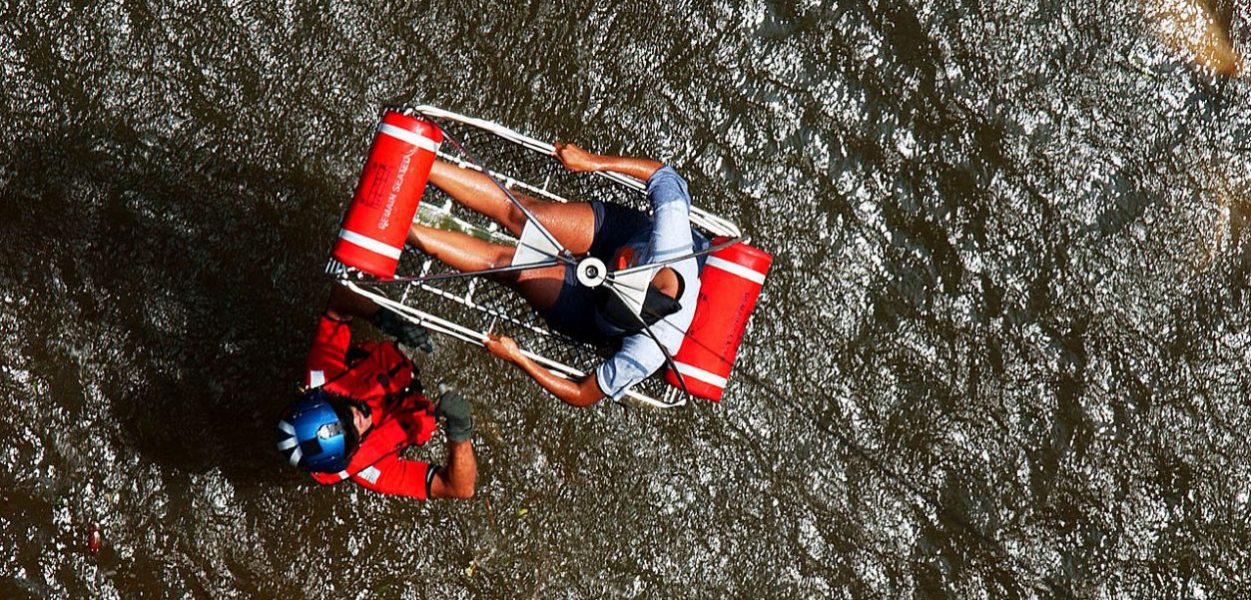Improving Disaster Readiness Worldwide
Courtney Durham—
Considering the current impediments to disaster risk reduction and growing risk from climate change, a number of policies can help nations shift the balance from reactivity to proactivity. First, disaster managers should build contingency plans for a variety of disaster scenarios, drawing on the Sendai Framework for Disaster Risk Reduction, a United Nations document that provides guidelines for disaster readiness. These plans should come from the national level but should incorporate sub-national and local levels in their implementation. At a minimum these preparations should include four elements: funding for disaster risk reduction, localized disaster readiness projects, improved coordination across areas of government, and continuous learning and improvement.
Increase the Amount of Disaster Risk Reduction Funding from a Variety of Sources. Disaster risk reduction needs new and additional funds from a variety of sources. To begin with, the global community needs to diversify sources of funding for disaster readiness projects, representing the multitude of donors that would consider prioritizing disaster risk reduction given its cost-effectiveness. These funders could include United Nations agencies such as the United Nations Office for Disaster Risk Reduction or the United Nations Development Programme, multilateral development banks such as Inter-American Development Bank, national donor governments, private companies, and credit agencies. A comprehensive package of disaster readiness funding could include grants and loans, insurance mechanisms like the international Caribbean Catastrophe Risk Insurance Facility, and in-kind contributions like staff secondments.
Funds for these efforts must be made accessible for developing countries especially. Donors to disaster readiness efforts need to avoid red tape in the form of complex applications and lengthy response times. At the country level, national governments need to carve out public finances for disaster risk reduction in annual budgets. Dedicated budget line items can encourage the private sector to join with public-private partnerships. Proactive funding also provides nations with the agency to determine exactly how, where, and to whom money will flow and ease the burden of international fund-raising, bidding, and reporting.
Incorporate Communities in the Design and Implementation of Disaster Readiness Efforts. Disaster planners also need to develop the volunteer response capacity of local community stakeholders. “Boots on the ground” in an affected area allows leaders to deploy initial response measures immediately after a natural disaster hits. Routinely, decision makers wrongfully presume that local communities lack adequate knowledge and expertise, and overlook the vast potential that community members have in disaster responses. Disaster risk reduction plans need to prioritize local pre-positioning of supplies; training local staff to mobilize before, during, and after disasters; modeling risk using local knowledge; and pooling risk among community members. Disaster risk reduction can also become a major component of local school curriculums. Stakeholder mapping can enlist residents to ground-truth and verify information. These data should incorporate the latest technologies like GIS and other satellite imagery to understand who is at risk and who is able to provide assistance.
Participatory disaster readiness planning represents not only a logistical necessity but also an ethical necessity. Giving agency to those who bear the brunt of climate change impacts and face increasingly intense natural disasters is the right thing to do. Incorporating their voices into planning and implementing disaster management offers important context, history, and creative solutions for effective disaster risk reduction. Strong relations with community members can enable adequate access, outreach, and response measures. A human-rights approach to disaster risk reduction may improve agency and empower local communities.
Mainstream Long-Term Planning for Disaster Risk Reduction and Improve Coordination. Governments also need to build institutional and personnel capacity to manage funds from all sources. It is not enough to just receive money for disaster readiness; funds must be effectively channeled to project sites. Long-term planning, in the form of improved regulatory and legal frameworks, can build resilience and save lives and livelihoods as it places disaster risk reduction squarely into national development planning. Thus, governments should avoid the trappings of near-term planning, often marred by changing political tides, and work toward long-term planning based on common consensus that sustainable development benefits everyone. Disaster managers also need to emphasize capacity building at all levels, especially regionally and locally.
Disaster risk management plans should prioritize effective stakeholder engagement that improves coordination, lines of communication, and collective decision-making. A stakeholder in disaster readiness is anyone who considers themselves a stakeholder, not a predefined, select group of actors. To better engage on the front end, for example, U.N. groups that normally respond after disasters strike could meet on a routine basis to exchange information and best practices. Coordination will also grease the proverbial wheels when it is response time and introduce a chain of command to enforce when a disaster strikes. This organizational structure can include community members, nonprofits, U.N. agencies, and other vested stakeholders that can respond with clear value-add.
Monitor and Evaluate. Sufficient disaster risk reduction plans will require monitoring and evaluation that effectively communicate successes and challenges. Building such frameworks requires not pre-judging which measures matter most from the top down. Rather, feedback mechanisms that capture the issues and stories that are most important to stakeholders should be built in. In developing monitoring and evaluation frameworks, knowledge management, and learning strategies, disaster planners should consider a combination of qualitative and quantitative approaches. Planners should also develop ongoing, informal opportunities for partners to communicate with each other laterally (not only through formal reporting mechanisms shared “up” that often do not get distributed widely). Peer-to-peer exchange platforms, virtual gathering opportunities (such as webinars, conference calls, and newsletters), and network-based capacity building tools can all connect to overall disaster readiness monitoring strategies. Such an approach can help build capacity, develop ownership, and cement accountability.
The era of certain uncertainty ushered in by climate change requires disaster preparedness unlike that seen before. We can equitably and sustainably build resilience to climate change impacts only when we include local communities and address root causes of vulnerability. Resources channeled toward preparation will save money in the long run, upward of four-fold. A new era of disaster risk reduction depends on planning with real-time data, along with continually improved monitoring and evaluation of disaster readiness efforts. Beyond the clear financial savings and technical advancements that make this new approach smarter, we have a moral imperative to help those experiencing very real climate change impacts today.
From A Better Planet, edited by Daniel C. Esty. Published by Yale University Press in 2020. Reproduced with permission.
Courtney Durham received a Master of Environmental Management at Yale School of Forestry & Environmental Studies. She currently works as the Senior Associate, Coastal Wetlands and Coral Reefs for The Pew Charitable Trusts. She has also worked with World Resources Institute and the German Development Cooperation (GIZ). Daniel C. Esty is Hillhouse Professor of Environmental Law and Policy at Yale School of the Environment and Yale Law School. He served as head of the Connecticut Department of Energy and Environmental Protection from 2011 to 2014 and in several leadership roles at the U.S. Environmental Protection Agency from 1989 to 1993.
Further Reading:



























